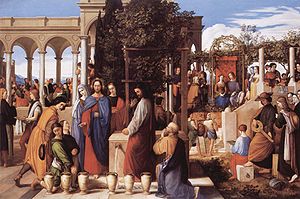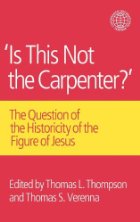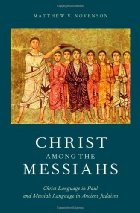Part 9: “A searching critical blitz of the Schmidt hypothesis”

The previous post in this series began a critical analysis of an essay by John C. Meagher, delivered at the Colloquy on New Testament Studies back in 1980, before such well-known figures in the New Testament world as Charles H. Talbert, Vernon K. Robbins, and William R. Farmer. This post continues with Meagher’s “searching critical blitz”* of what most scholars believe is Karl Ludwig Schmidt’s hypothesis.
What Meagher got right
Some of Meagher’s criticisms of Schmidt’s views on the gospels were correct. Schmidt sometimes displayed far too much naive optimism when it came to the fidelity of the evangelists (and the tradents they followed) to the Jesus tradition. It is quite clear that each evangelist altered the tradition to fit specific theological views. Thus, Meagher was right in criticizing Schmidt for asserting that the gospels have a certain intrinsic reliability simply by virtue of their genesis as folk books. He summed up Schmidt’s views in Colloquy on New Testament Studies:
The content of the gospels was brought to the brink of compilation by a transmissional tradition graced by “the fidelity to the material which characterizes all popular tradition” and it is this that assures its reliability — “that the people as community became bearer and creator of the tradition makes its content reliable.” (p. 207, quoting Schmidt in The Place of the Gospels in the General History of Literature, emphasis mine)
While we may correctly view Schmidt’s comments as overly optimistic at times, we should also point out that at other times during his analysis in The Place of the Gospels, he is careful, rational, and properly skeptical.
What Meagher got wrong
However, on the whole, Meagher’s attack on the Schmidt hypothesis fails, because he — for whatever reason — was convinced that Schmidt believed that the gospels were utterly unique, and therefore any investigation into analogous works would be a waste of time because:
. . . the unprecedentedness is of the essence and that the possible analogues can only be misleading as an interpretive instrument. (Colloquy, p 213)
Here is the point at which Meagher went astray. He showed abundant familiarity with Schmidt’s work, as found in the German edition of The Place of the Gospels in the General History of Literature and in Twentieth-Century Theology in the Making (Harper, 1971). Meagher peppered his essay with footnotes and many quotes from both works. Hence it is all the more strange that he continually missed the clear evidence that Schmidt, in fact, did not think that “possible analogues [of the gospels] can only be misleading as an interpretive instrument.”
On the contrary, in Part Two of The Place of the Gospels, which spans 60 pages and examines 12 different literary examples as analogs to the gospels, Schmidt explained the purpose of the section in his introduction by affirming that “analogy is the only sensible and productive method.” (p. 27)
Meagher found Schmidt’s rejection of possible analogs (despite what Schmidt actually wrote) unwise and untenable. Moreover, it was unproductive. In other words, because scholars following Schmidt had thought the gospels were unique and that comparing them to other works would be fruitless, they had focused only on those four canonical books themselves. In Meagher’s words:
Continue reading “The Genre of the Gospels: How the Consensus Changed (Part 9)”










